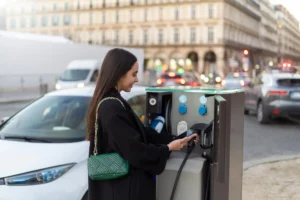
Home / EV Charging News / A Quick Guide for Installing EV Charging Stations at Your Workplace
Deciding on a workplace EV charger installation is a great way to take the office to the next level, welcoming e-Mobility into the company. Whether you are switching to an EV float or making the workplace more attractive for company employees, this quick guide will be very helpful in the planning process to install an EV charging station at the workplace.
Companies or businesses that want to install electric car chargers at the workplace should consider medium to high capacity Level 2 EV chargers. These chargers can deliver up to 80 amps over a 208V connection, charging the complete battery of an EV in around 4 to 10 hours.
It is important to plan when choosing the number of EV charging stalls since you should meet the needs of current employees owning EVs, future EV owners in the company, and company visitors.
The e-Mobility market features different Level 2 EV chargers. When planning to install an EV charger at the workplace, you should select a charger that matches your brand standards, needs of the employees, and the nearby environment of the office building. Here are some key aspects to consider when choosing the EV charger:
To install an EV charger at the workplace, it is important to have the right resources. In this section, we provide you with key resources that will help you plan this project.
Planning on a workplace EV charger installation requires special attention to detail and previous knowledge of the process to serve as guidelines. This section provides a small overview of the whole installation process.
There are local and federal government incentives, helping reduce the overall cost of installing a Level 2 EV charger at the workplace. The following websites provide a list of these programs/incentives:
There are many other programs available. You should ask your utility, certified electrician, or the local government for available options in your state.
